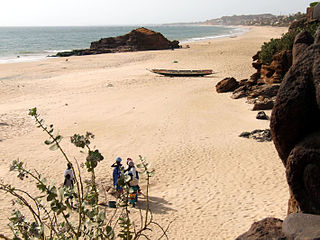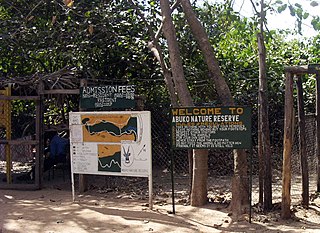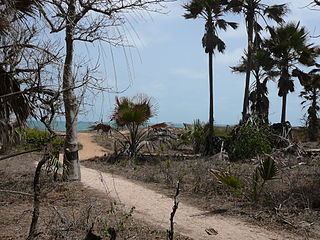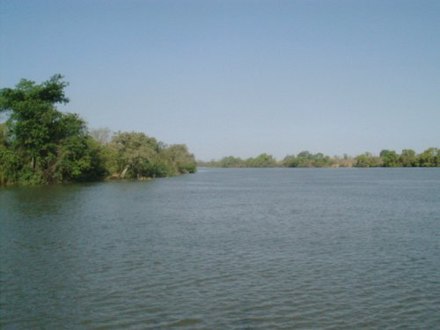The protected areas of South Africa include national parks and marine protected areas managed by the national government, public nature reserves managed by provincial and local governments, and private nature reserves managed by private landowners. Most protected areas are intended for the conservation of flora and fauna. National parks are maintained by South African National Parks (SANParks). A number of national parks have been incorporated in transfrontier conservation areas.
The Protected areas of New South Wales include both terrestrial and marine protected areas. At 30 June 2010 there were 776 separate terrestrial protected areas with a total land area of 6,641,256 hectares. 189 of these are national parks, totalling 5,045,422 hectares. At the same time there were 18 aquatic protected areas with a total area of 347,087 hectares.

A nature reserve may also be known as a natural reserve, wildlife refuge or sanctuary, biosphere reserve (bioreserve), natural or nature preserve, or nature conservation area. It is a protected area of importance for flora, fauna, or features of geological or other special interest, which is reserved and managed for purposes of conservation and to provide special opportunities for study or research. Nature reserves may be designated by government institutions in some countries, or by private landowners, such as charities, and research institutions. Nature reserves fall into different IUCN categories depending on the level of protection afforded by local laws. Normally it is more strictly protected than a nature park. Various jurisdictions may use other terminology, such as ecological protection area or private protected area in legislation and in reserves' official names.
Local nature reserve (LNR) is a designation for nature reserves in Great Britain. The designation has its origin in the recommendations of the Wild Life Conservation Special Committee which established the framework for nature conservation in the United Kingdom and suggested a national suite of protected areas comprising national nature reserves, conservation areas, national parks, geological monuments, local nature reserves and local educational nature reserves.

The Bukit Timah Nature Reserve is a small 1.64 square kilometre nature reserve near the geographic centre of the city-state of Singapore, located on the slopes of Bukit Timah Hill, Singapore's highest hill standing at a height of 163.63 metres, and parts of the surrounding area. The nature reserve is about 12 kilometres from the Downtown Core, Singapore's central business district.
The South West Slopes is a region predominantly in New South Wales, Australia. It covers the lower inland slopes of the Great Dividing Range extending from north of Cowra through southern NSW into western Victoria. More than 90% of the region is in the state of New South Wales and it occupies about 10% of that state.
Singapore has about 65 species of mammals, 390 species of birds, 110 species of reptiles, 30 species of amphibians, more than 300 butterfly species, 127 dragonfly species and over 2,000 recorded species of marine wildlife.

Wildlife of the Gambia is dictated by several habitat zones over its total land area of about 10,000 km2. It is bound in the south by the savanna and on the north by the Sudanian woodlands. The habitats host abundant indigenous plants and animals, in addition to migrant species and newly planted species. They vary widely and consist of the marine system, coastal zone, estuary with mangrove vegetation coupled with Banto Faros, river banks with brackish and fresh water zones, swamps covered with forests and many wetlands.

Tourism in Senegal is a vital part of the West African nation's economy.

Abuko National Park is a nature reserve in the Gambia lying south of the town of Abuko. It is a popular tourist attraction and was the country's first designated wildlife reserve.

Bijilo Forest Park is a forest park in the Gambia, lying in the coastal zone about 11 km west of Banjul the Kombo Saint Mary District.

Kiang West National Park is one of the largest and most important wildlife reserves in the Gambia. It was declared a national park in 1987 and is managed by the Gambia Department of Parks and Wildlife Management.

River Gambia National Park is a national park in the Gambia.

Bao BolongWetland Reserve is a national park in The Gambia. Established in 1996 it covers 220 square kilometres.

The Tanji Bird Reserve is a bird reserve in The Gambia. Established in 1993, it covers an area of 612 hectares. It is also known as Karinti, the Tanji River Reserve or the Tanji National Park.

Ancient and Primeval Beech Forests of the Carpathians and Other Regions of Europe is a transnational composite nature UNESCO World Heritage site, encompassing forests in 12 European countries.











